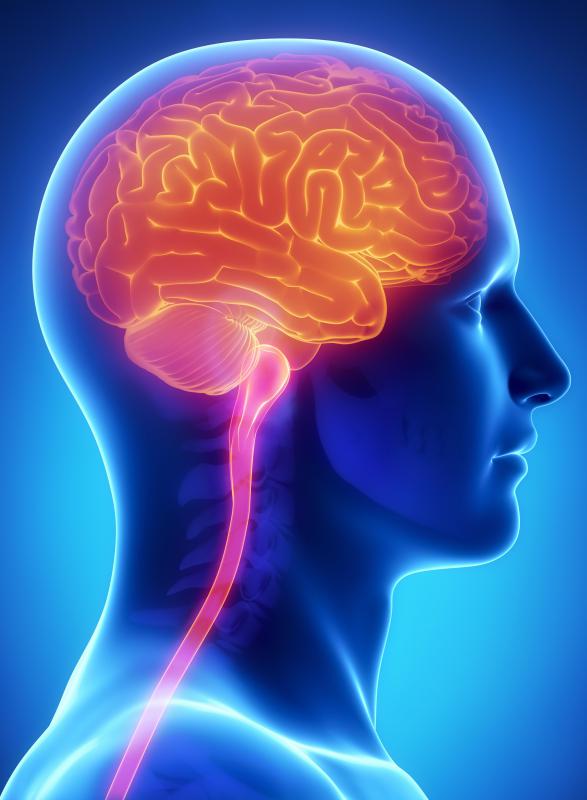At TheHealthBoard, we're committed to delivering accurate, trustworthy information. Our expert-authored content is rigorously fact-checked and sourced from credible authorities. Discover how we uphold the highest standards in providing you with reliable knowledge.
What Is the Motor Strip?
The motor strip, also called the primary motor cortex or precentral gyrus, is a part of the frontal lobe of the brain that controls muscle movement, including voluntary movement, swallowing, and speech. Also located on this strip is the pyramidal tract, which contains nerve cells that send messages to cranial and spinal nerves. Shaped like a band, one end of the motor strip is located in the part of the brain that lies below the middle of the top of the head and runs toward the ear. This strip lies at the edge of the frontal lobe adjacent to the central sulcus and parietal lobe.
Planned movements originate in electrical impulses generated in the frontal lobe. These impulses activate appropriate areas of the motor strip, which send messages for the movement to occur. Once the movement has occurred, feedback is sent to the frontal lobe so that it can compare the planned movement with the movement that actually happened and make adjustments as necessary. This feedback also creates awareness in the mind of the individual that the movement has happened.

An example of how this feedback process works is in the lifting of a suitcase. If the individual assumes the suitcase is full, he will prepare to lift it using enough force that the suitcase will fly upward if it is empty. The frontal lobe will quickly register this feedback and make adjustments to lessen the contraction of the muscles in accordance with the actual lighter weight of the suitcase.

Each area of the motor strip controls specific regions of the body. The area closest to the top of the head controls the genitalia, buttocks, and legs. Moving toward the center of the motor strip, areas control the trunk, arms, and fingers. The face, mouth, and swallowing muscles are controlled by the area of the motor strip closest to the ear.
These divisions can be pictorially represented by the motor homunculus, or “little man” in Latin. Body parts in this representation do not correspond in size with actual body parts. The hands, mouth, and tongue are much bigger in the homunculus representation than they are on the body, and the legs are much smaller. This is meant to show how much of the primary motor cortex is devoted to the control of each part of the body. Body parts that require fine muscle control take up more space than areas that do not.

Damage to the motor strip from disease or injury can cause problems with mobility. Seizures in this area can cause involuntary movements of the affected body part, depending on which segment of the brain is seizing. In rare cases, individuals can suffer from alien hand syndrome, in which the motor strip acts independently of the frontal cortex. Lacking control of the frontal cortex, body parts may make seemingly random, involuntary movements, like grasping the neck or stuffing food into the mouth. As the frontal cortex feedback system also fails to work, the individual may not be aware that the body part is moving until she sees the body part in action and subsequently is unable to control the body part.
AS FEATURED ON:
AS FEATURED ON:













Discussion Comments
Many sufferers of alien hand syndrome really insist that their hand is under the control of someone else. Many types of brain injuries can cause this phenomenon.
In early medicine surgeons would inadvertently trigger this in patients, trying to cure various brain illnesses.
Post your comments